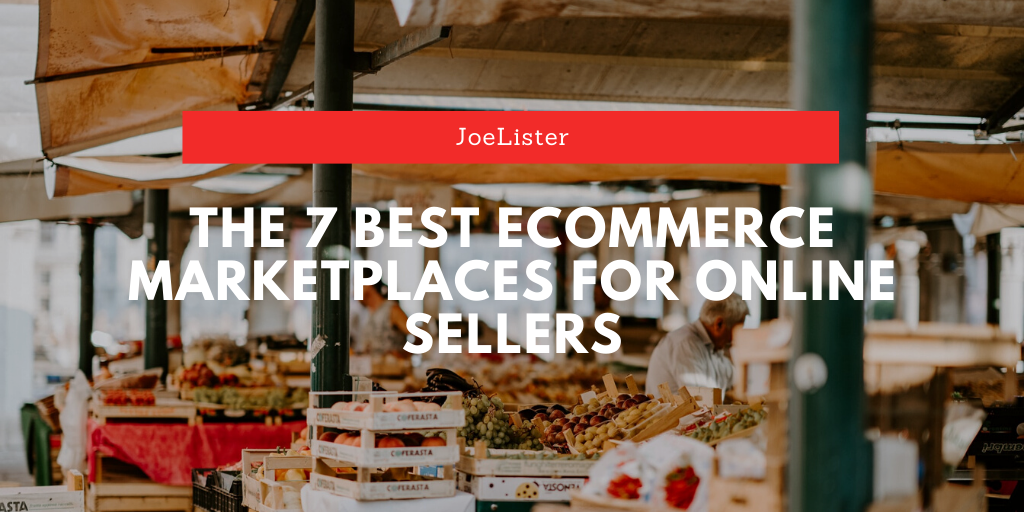You’ve got great products, and you know that they’re a great fit for your target audience. All you need to do is actually connect with that audience and make the sale. This is where marketplaces for sellers come in.
Online sellers should consider building their own websites that have eCommerce capabilities, but sometimes a website isn’t enough. So many shoppers are turning to eCommerce marketplaces like Amazon and eBay specifically to search for products instead of heading to search engines first.
Buyers treat the bigger marketplaces like a search engine, and there’s a good chance that if you’re not using them, you could be missing out on potential sales.
The question is, of course, which eCommerce marketplace to focus your efforts? There are so many platforms available that it can be difficult for brands to decide which ones are worth the time and effort.
In this post, we’re going to take a look at the seven best eCommerce marketplaces for online sellers in 2020 and when you should use each one.
1. Amazon: The Everything Marketplace
You know we had to start this list with Amazon. Amazon today is THE eCommerce marketplace. Nobody even thinks about book selling any more with Amazon. They have become the everything store.

When plenty of people think of online shopping, Amazon and it’s free same-day, one-day, or two-day shipping often jumps to mind. They have a database with over 606 million products, and they account for almost 40% of all U.S. online retail sales. This platform has over 310 million active users across multiple countries (and continents).
The potential reach on Amazon is exceptional, especially since you can use their ad system to increase your visibility.
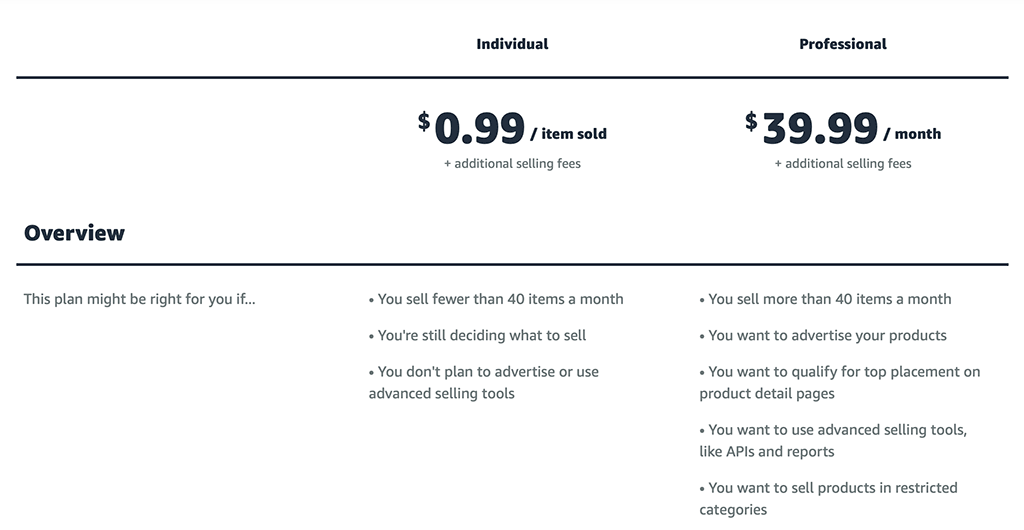
Amazon Selling Fees
Selling fees vary on Amazon, costing anywhere from 6-25% of the total purchase value. Sellers with the Individual selling plan will pay $0.99 for each item sold, plus closing fees ranging from $0.45 to $1.35.
The Professional selling plan costs $39.99 per month and an average of 13% selling fees, but don’t have to pay the per-item fee.
2. eBay: Not Just for Vintage Items
Another classic: eBay. This eCommerce platform is one of the ones that started it all, and it was always accessible to small businesses looking to sell items quickly.
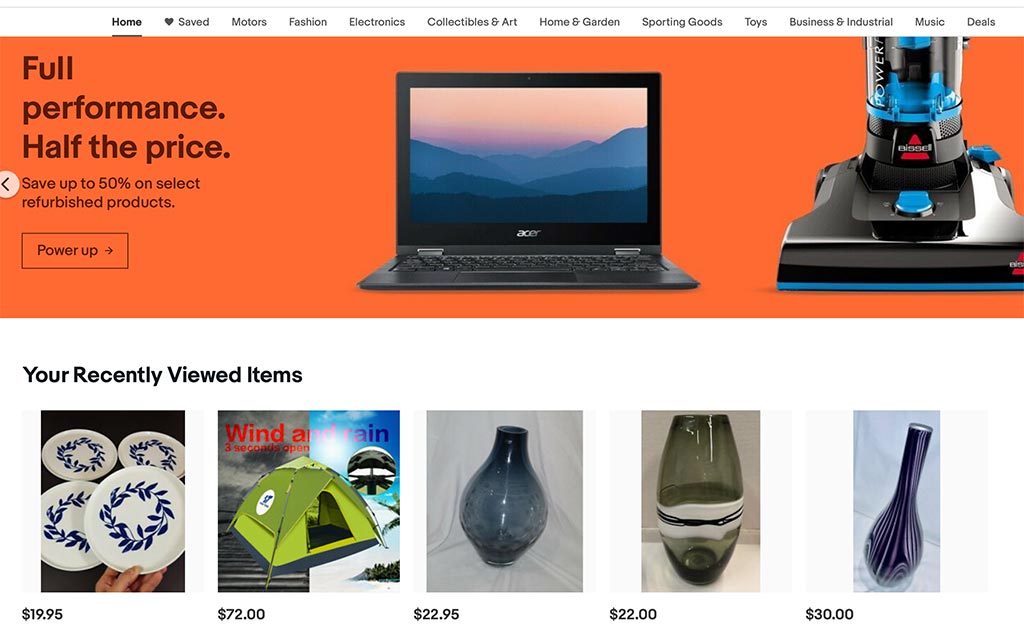
eBay currently has over 182 million users worldwide, with usage still increasing. It does have a diverse userbase, but over 70% of traffic comes from the US. There are over 1.3 billion listings on eBay, varying from brand-new, original goods to used clothes in horrible condition. In Q4 of 2019 alone, over $22 billion were bought and sold on their platform.

eBay Selling Fees
There are multiple types of seller fees to consider on eBay. Simply put, you need to pay a fee to list your item on eBay, and you’ll be charged a final fee when the item is purchased. Certain categories have additional fees, and you can pay more for “perks” like larger photos to help you get more attention. Your final value fees may be up to 10% or lower in most cases, with insertion fees averaging around $0.35
Of course if you are a JoeLister customer you can easily list your Amazon products on eBay within minutes. So no Amazon seller has an excuse to not increase their sales using JoeLister.
3. Shopify: Not a Marketplace, but Ignore at Your Peril
Shopify isn’t really an eCommerce marketplace, but it’s an important eCommerce platform that we want to acknowledge.
Keep in mind that once marketplaces start to get larger, they may become more exclusive, more expensive, or even compete with your products and eat into your profits so much they can damage your business.
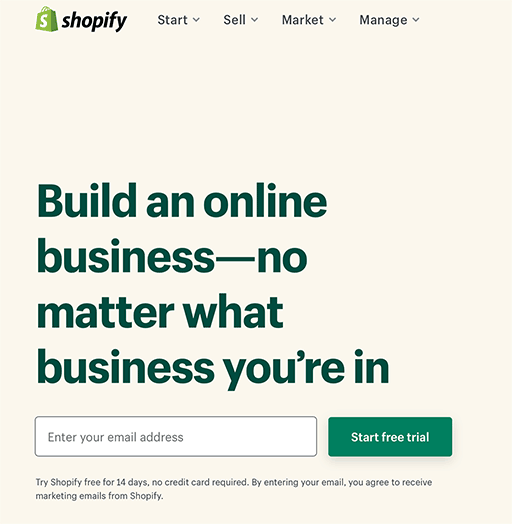
Having your own online store on a platform like Shopify, therefore, is essential. You get to control your store, create brand equity, drive SEO traffic to you and your product pages, and you get access to your customer list.
Shopify makes setting up an online retail store exceptionally easy, and their platform has thousands of free and paid “apps” that you can use to improve your store’s functionality.
Shopify Selling Fees
Shopify has varying plans and fees. A basic plan starts at $29 per month, with additional fees based on the payment type. These additional fees cost at least 2% but may cost up to 2.9% + $0.30. Keep in mind, though, that they also offer shipping discounts.
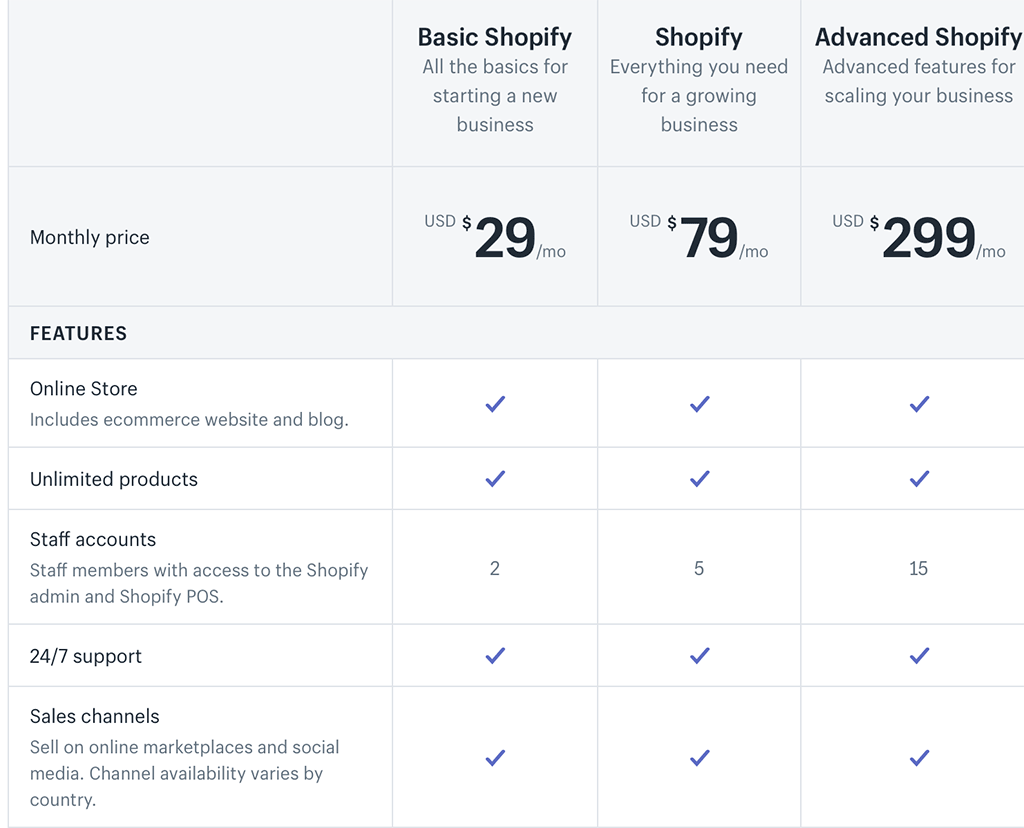
4. Etsy: The Crafty Marketplace for Sellers
If you’re making your own products yourself, Etsy is a great place to sell online.
This platform is where you’ll find lots of homemade jewelry, handmade leather dog collars, and engraved, personalized Christmas ornaments and just about anything else you can think of.
I’ve ordered wooden chopsticks, fresh cilantro plants, and my wedding hairpiece on Etsy.
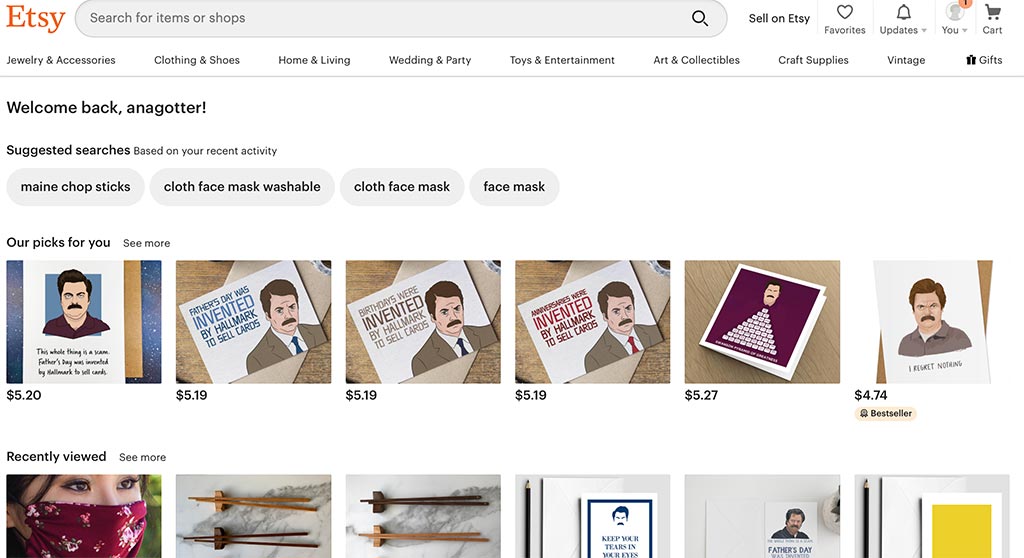
This eCommerce marketplace is great for creatives selling “artisanal” goods.
Etsy Selling Fees
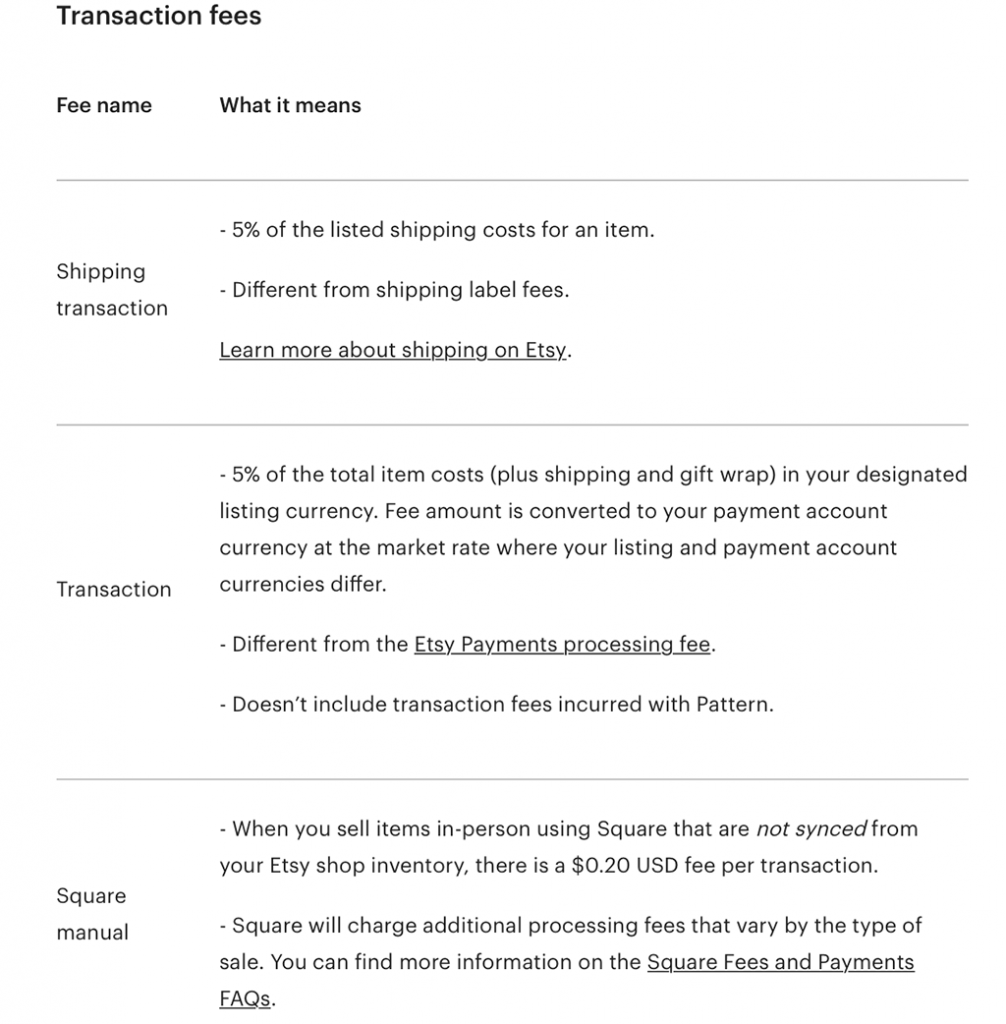
Etsy does charge a listing fee of $0.20, which expires and must be renewed after four months. If you’re selling multiple items in a single listing, you must be $0.20 for each. You also have to pay 5% of the total item’s cost, plus potential shipping or gift wrapping charges if applicable.
5. Poshmark: The Fashion Marketplace
If you’re looking for a fashion marketplace for online selling, Poshmark should be a go-to choice.
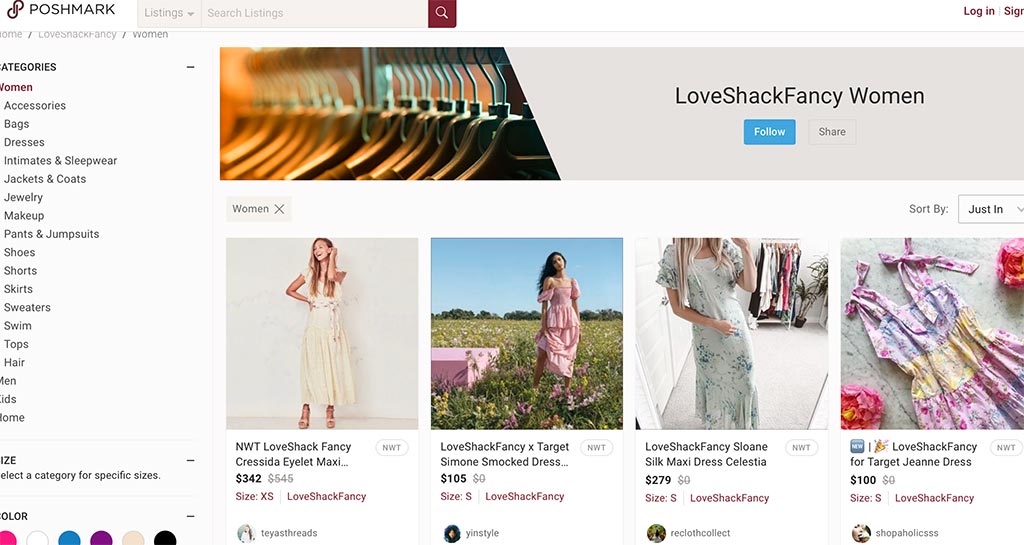
While eBay has always been a source for the clothing niche — recently Poshmark made its name by facilitating the resale of clothing in both new or in great condition. Users are able to list items, snap pictures, and then accept direct sales or bids if they choose.
There’s a lot of open communication and potential negotiation here, and sellers can sell their own original or resold items here.
Sellers can also proactive reach out to users who are “watching” an item or who have liked it, offering exclusive discounts in attempt to move the items faster
Poshmark Selling Fees
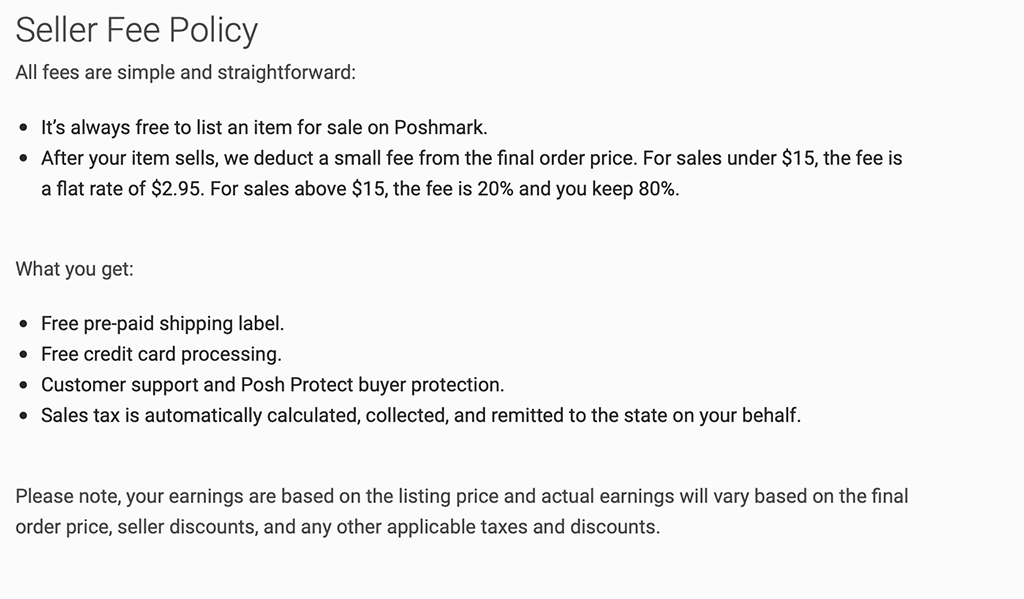
Poshmark has over 50 million users, but it is important to note that their fees may be higher than other competitors. They don’t charge a listing fee, but they do charge selling fees. They’ll charge 20% fees for items over $15, and a flat rate of $2.95 for items under $15. For this price, you’ll also get a free pre-paid shipping level, and buyer protection.
6. Walmart: Coming After Amazon
Walmart has an online marketplace that’s a lot like Amazon, allowing sellers to list products and sell them directly to consumers.
When people go searching for something online at Walmart, your listing can also show up.
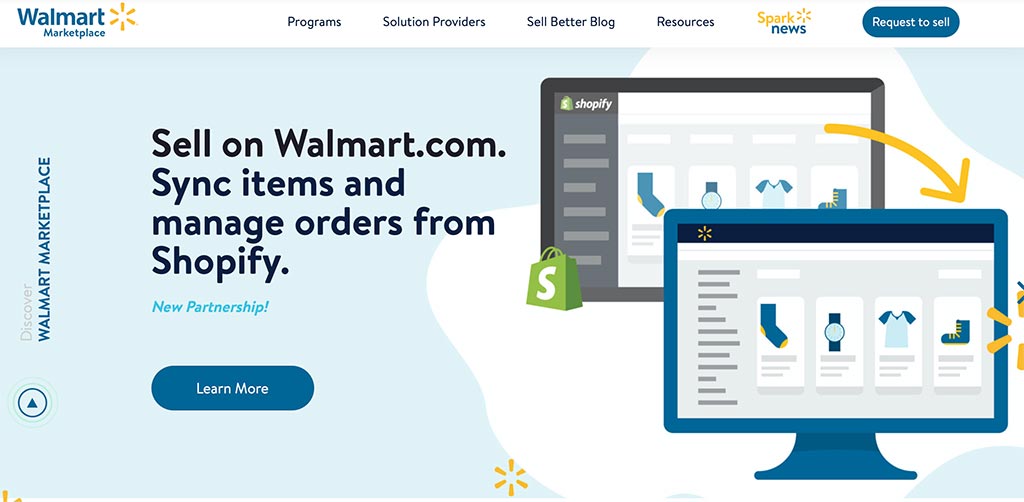
Walmart Selling Fees
There are no costs to list items, and there are no monthly subscriptions. There are more than 100 million users who you could potentially reach with this ecommerce marketplace
You do, however, need to pay a “referral fee” for every purchase, which ranges from 8-20% based on the product category, with many costing around 15%.
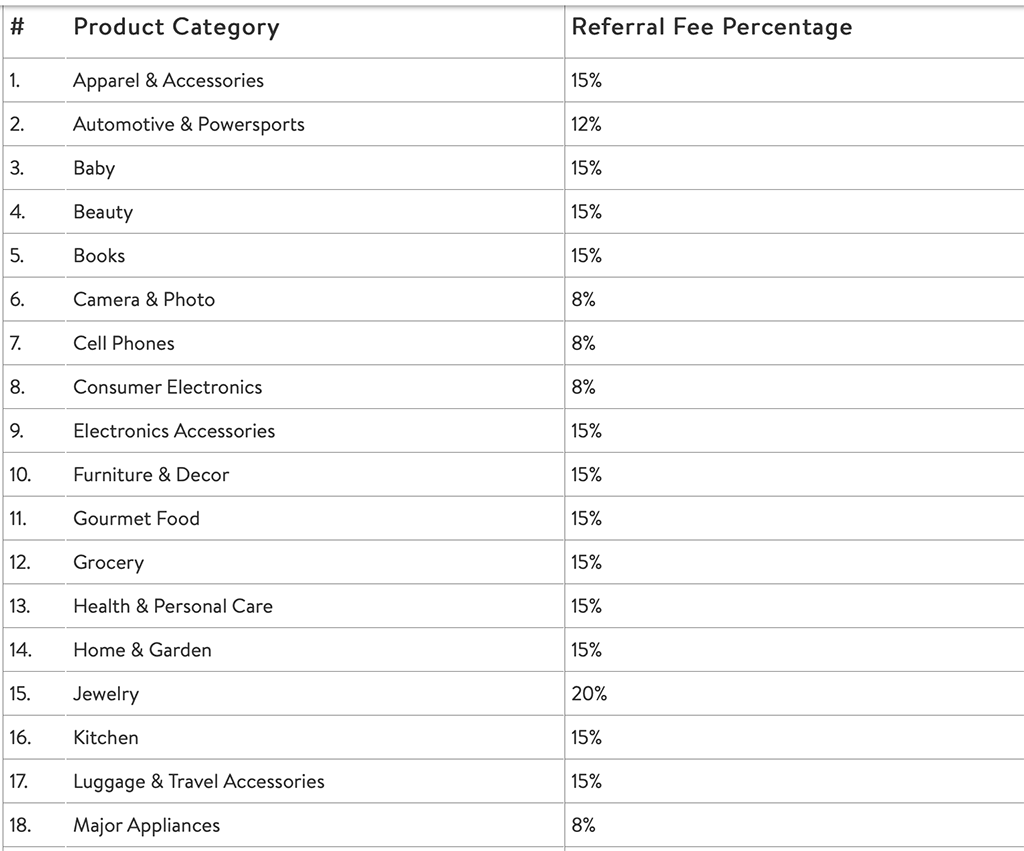
7. Facebook Marketplace: The Best Local Online Marketplace
Facebook’s Marketplace has gotten a big revamp in the past few years, making it a more legitimate eCommerce platform than ever before.
Since there are billions of unique monthly users on Facebook who are highly engaged and browsing idly on the platform, this is a great marketplace for sellers to consider.
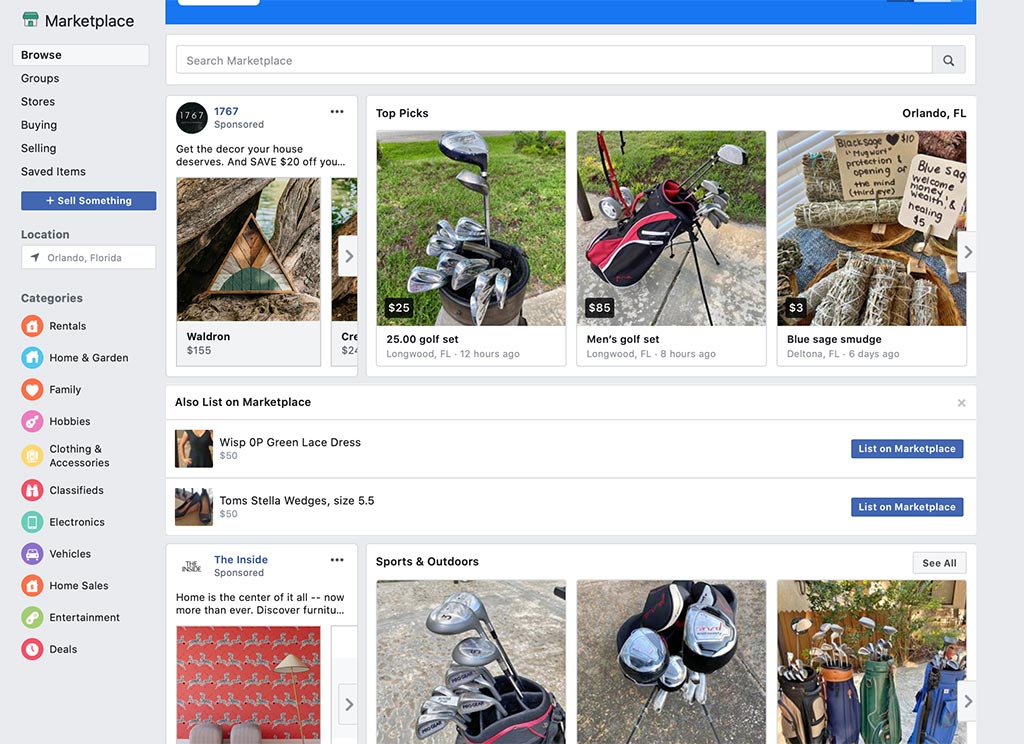
It’s free to list items on the Marketplace, and it’s easy to do. Just create a listing, upload photos, and share a description and pricing information.
There are now 5-star seller ratings that can be earned, based on a customer’s past experience with your business. You can sell items locally or ship them across the globe.
Facebook Selling Fees
When you’re selling directly through the Marketplace on Facebook, you’ll pay 5% of the total item’s cost, or a $0.40 minimum, whichever is greater. This is deducted from the payout, which will occur about 15-20 days after you’ve marked an item as shipped and send the tracking number.
Of course with in-person transactions you can get paid in cash and pay no fees.
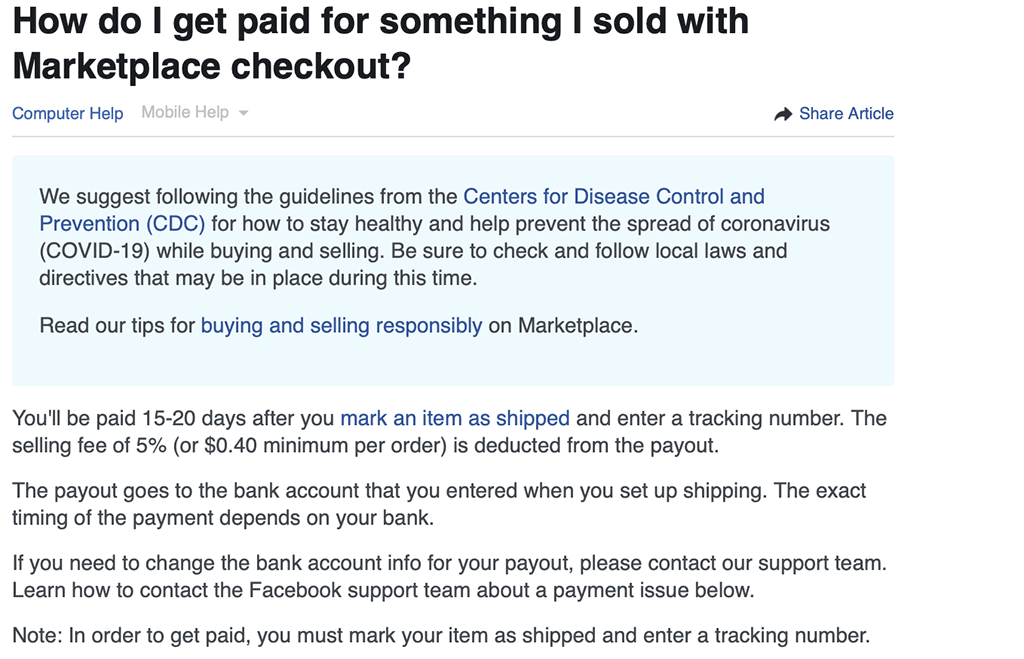
Best Marketplaces for Sellers Conclusions
When you’re thinking about the marketplaces for sellers to focus on, these seven we highly recommend considering.
Despite the fact that they’re all online selling platforms that facilitate online sales, they’re all relatively diverse and may help you reach different audiences.
Users are going to turn to Etsy, for example, for handcrafted soup bowls that they’ll pay $60 apiece for; they’ll go to Walmart for something they can get quickly and for as cost-effective as possible.
Consider which platforms can help you best reach the specific niche you’re targeting. Start there and add more platforms as you see fit.
Looking for more tips about how to drive online sales with eCommerce platforms? Subscribe to our newsletter so you never miss a post!
* Please note we may include affiliate links in some posts. But only for products we use personally and have deep faith in.

